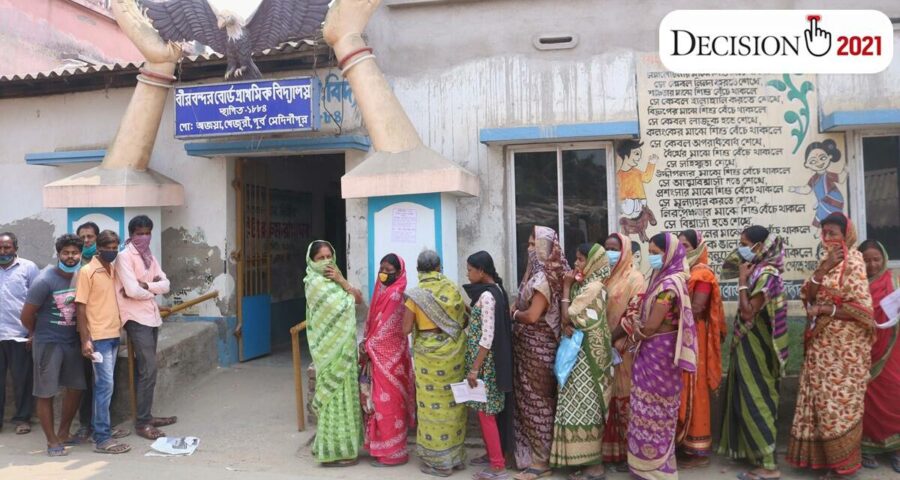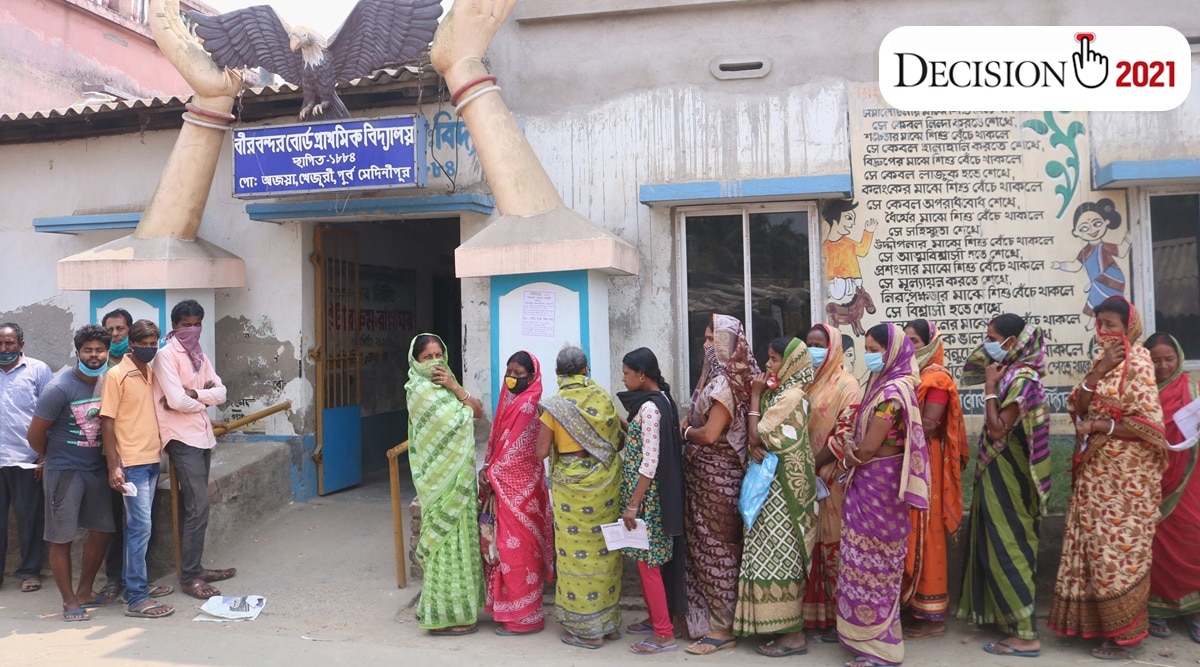Trinamool and BJP’s competitive politics reinforces and panders to upper-caste sensibilities.
(Written by Subhajit Naskar)
In 2012, the West Bengal’s government announcement of a monthly allowance for imams sparked widespread discussions on Mamata Banerjee’s politics of Muslim appeasement. Eight years later, she announced a monthly honorarium and free housing for Hindu Brahmin priests.
While urban upper-castes were outraged by the former, their silence was deafening when it came to appeasement of Brahmins. The contrasting responses offer a glimpse into the myth of “casteless” Bengal, which the ongoing Assembly elections have further exposed. The CM, a Brahmin by caste, has already announced a war on those casting aspersions on her Hindu credentials by saying, “I’m Brahmin, don’t teach me Hindu dharma”. Her opponent in Nandigram, Suvendu Adhikari, has also championed his upper-caste Hindu identity.
Lest we forget, postcolonial Bengal had seen the caste question being subsumed by class. Left rule had strengthened such thinking. The Bengali bhadralok was espoused as a caste-blind category to camouflage the caste hegemony of dominant caste Bengali communities. But the 2011 census laid bare this “castelessness” by revealing the complete invisibilisation of Bengali Dalit and Adivasi communities from the urban spaces. In Kolkata itself, only 0.28 per cent STs and 5.38 per cent SCs live in the city, while the state has almost 23 per cent SC population and 5.5 per cent ST population.
Post-partition of Bengal, till date, has been characterised by upper-caste supremacy, from art forms to political languages to social narratives, and that was how the caste capital of oppressive castes is reproduced over and over again.
Bengal often boasts of the universalism of Tagore, the heroism of Subhash Chandra Bose or even the civil Hinduism of Vivekananda, but it has successfully abandoned the tall social reformers from the lower caste Namasudra community, Harichand Thakur and Guruchand Thakur. Mahapran Jogendra Nath Mandal, the tallest Dalit leader of Bengal and Dr BR Ambedkar’s colleague, was also ignored. While Harichand-Guruchand worked towards an anti-caste egalitarian social order, Mandal worked for Dalit-Muslim unity.
Prime Minister Narendra Modi’s recent visit to a Matua temple in Bangladesh’s Orakandi can be labelled BJP’s vote-bank politics given the Matua community’s citizenship concerns. But the visit didn’t lead Bengali liberals to reflect upon Matua community’s rich history. In fact, both BJP and TMC cannot afford to adopt or advocate Matua religion’s principles against Brahminism. Needless to say, Leftist political formations of Bengal largely remain caste-blind.
The BJP, in its Sonar Bangla Sonkolpo Potro 2021, promised to set up a Purohit Welfare Board where all “purohits across West Bengal will be given a monthly honorarium of Rs 3,000”, a hike from Banerjee’s monthly Rs 1,000 honorarium. Such competitive politics further reinforces and panders to upper-caste sensibilities.
The BJP’s pre-election politics of lunch in the Dalit Adivasi households without addressing the livelihood concerns of those vulnerable families proves the fact that its poll promises are an eyewash. Rather, the continuous caste-based violence by the upper castes on oppressed lower castes in BJP-ruled states makes it amply clear that its Sonar Bangla promise will privilege the already privileged caste Bhadraloks.
In the end, keeping aside the massive violence, and TMC’s “Khela hobe” and PM Modi’s “vikash Hobe” taunts, this election plays right into the lie of Bengali exceptionalism, a myth that camouflages caste under the garb of bhadralok politeness.
This polite politics helps them in reproduction and amplification of caste capital backed by major political parties. Such a caste society can only give lip service to majority Dalit, Adivasi and Pasmanda Muslim communities of Bengal while remaining unconcerned about the socio-political agency of marginalised.
(The writer is an assistant professor in the department of international relations, Jadavpur University.)
Source: Read Full Article


